Diploma 2014: "Treasury of deserted backdrops" by Anders Sletten Eide and Mattias Josefsson
The potential reuse of abandoned buildings and forgotten landscapes in the county of Hordaland.
Treasury of deserted backdrops
This diploma seeks to investigate the potential reuse of abandoned buildings and forgotten landscapes in the county of Hordaland.
Only 2% of Norways 385 186 km2 is occupied by man-made structures, including roads, railways, docks, houses, factories, farms, industrial land, offices etc.
In 2013 there were over 4 million buildings, of which 500.000 were left unattended. Over 30 railwaylines have been closed down during the last 100 years, and over 90 lighthouses during the last 200.
Based on the work of LA-based «Center for Land Use Interpretation»,Smout Allen Manaughs «British exploratory land archive», and Rietvelds “Vacant NL”, the project will act as a startingpoint for an extensive treasury of possibilities and opportunities in man-made structures in Norway
The development during the last 40 years tells us that going from a primary industrial economy to a knowledge-economy, big societal changes are bound to happen. This has clear spatial implications, visible through both emigration and closures of factories, farms and other mainly suburban or rural activities.
There are many reasons to maintain the rural settlements of Norway; Cultural, economical and military aspects are all interconnected. Rural regeneration, however, is not about reversing the process of modernization and progress in the countryside. It is about preservation and revival of natural and historical heritage and stimulating the rural economy at the same time. Conservation of the rural areas is also of major importance for conservation of diversity when it comes to both the country’s social and natural diversity.
We have chosen Hordaland as a representative region, where many of our findings hopefully will be applicable and transferable to a national context. From fishing villages to abandoned military barracks, from factories to obsolete roads, from quarries to lighthouses. According to the County Governor in Hordaland, over 500.000 farm buildings are left unattended in Norway. Add to equation the vast number of industrial, commercial, infrastructural and military installations, we have something of a treasury of potential.
Our diploma consists of three different stages.
1. The Archive is an online map marking around 150 abandoned places. This is an ongoing project where anyone can add a site they think could be of interest to others.
2. Out of this map we have chosen to go deeper in to 12 sites looking for a hidden potential. This section of your diploma is called The listings. These sites are presented through site photographies, sections, maps and models.
3. The final stage of our diploma we call The Implants. We have chosen to suggest two very different projects selected from the listings. One in Kinsarvik, and one on Döscherholmen.
The site in Kinsarvik is situated in the forest close to the old hydro plant in an industrial area founded by a Canadian company in the 60s. Parts of our research showed that Kinsarvik has a problem with a lot of radon emission from the ground. Radon is the number two cause of lung cancer after smoking. The Norwegian Radiation Protection Authority recommends taking precautionary measures when a house has radon levels over 100 bq/m3. In Kinsarvik there has been indoor peak readings above 40.000 bq/m3.
Our objective has been to twist the problem and turn it in to a positive local feature. One of the lesser-known properties of radon is that it can have a pain relieving effect for people with rheumatic disorders. Although this method is not clinically approved, it has proven to have a positive effect over the course of 150 years of similar treatment facilities in Europe.
We have suggested a pain-relief center in the old factory in Kinsarvik.
Situated in the harsh coastal climate on an island called Sotra west of Bergen, our second implant consists of two old, battered structures. The harvest of wild salmon is in today´s Norway considered a parenthesis. While most of the salmon bought in the stores are bred in industrial scale fish farms, a great number of old fishing industry buildings are abandoned. Hordaland is one of the biggest producers of salmon in Norway with a production exceeding 157000 tons a year (2013) and has more than 1000 people working in the sector.
The company Hortimare has established an algae farm in the neighboring county of Hordaland, Sogn og Fjordane. They are arguing that seaweed agriculture would benefit from being close to fish farms. The salmon farms contaminate the water with high levels of phosphorous and nitrogen, which in turn is beneficial for the growth of algae.
We have designed a new laboratory and processing plant, which will act as a learning center for fish farmers wanting to start production of algae in close proximity to their farm.
This project was awarded with a Distinction for outstanding quality by the diploma assessors.
All photos by: Anders Sletten Eide and Mattias Josefsson
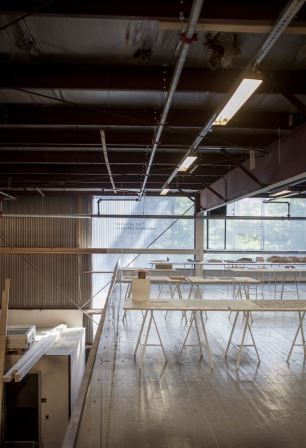
Exhibition
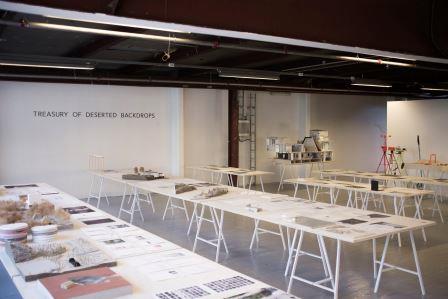
Exhibtion
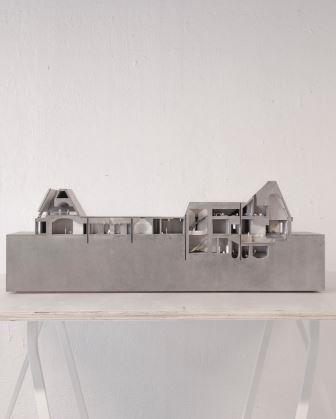
Section model 1:100
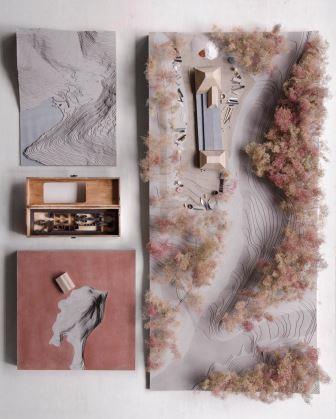
Situation model 1:10000, Poché model 1:250, Landscape model 1:200, Site model 1:200

Interior model 1:25
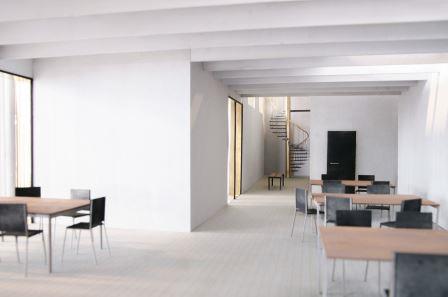
DØSCHERHOLMEN - Interior models 1:25
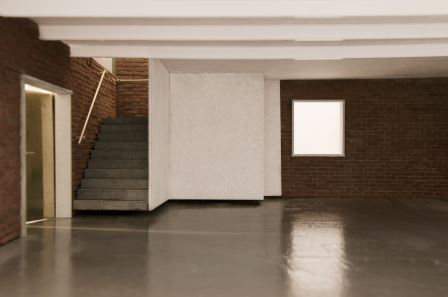
DØSCHERHOLMEN - Interior models 1:25
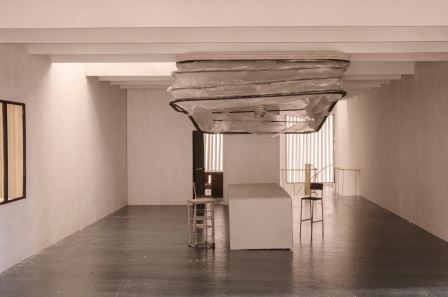
DØSCHERHOLMEN -Interior model 1:25
